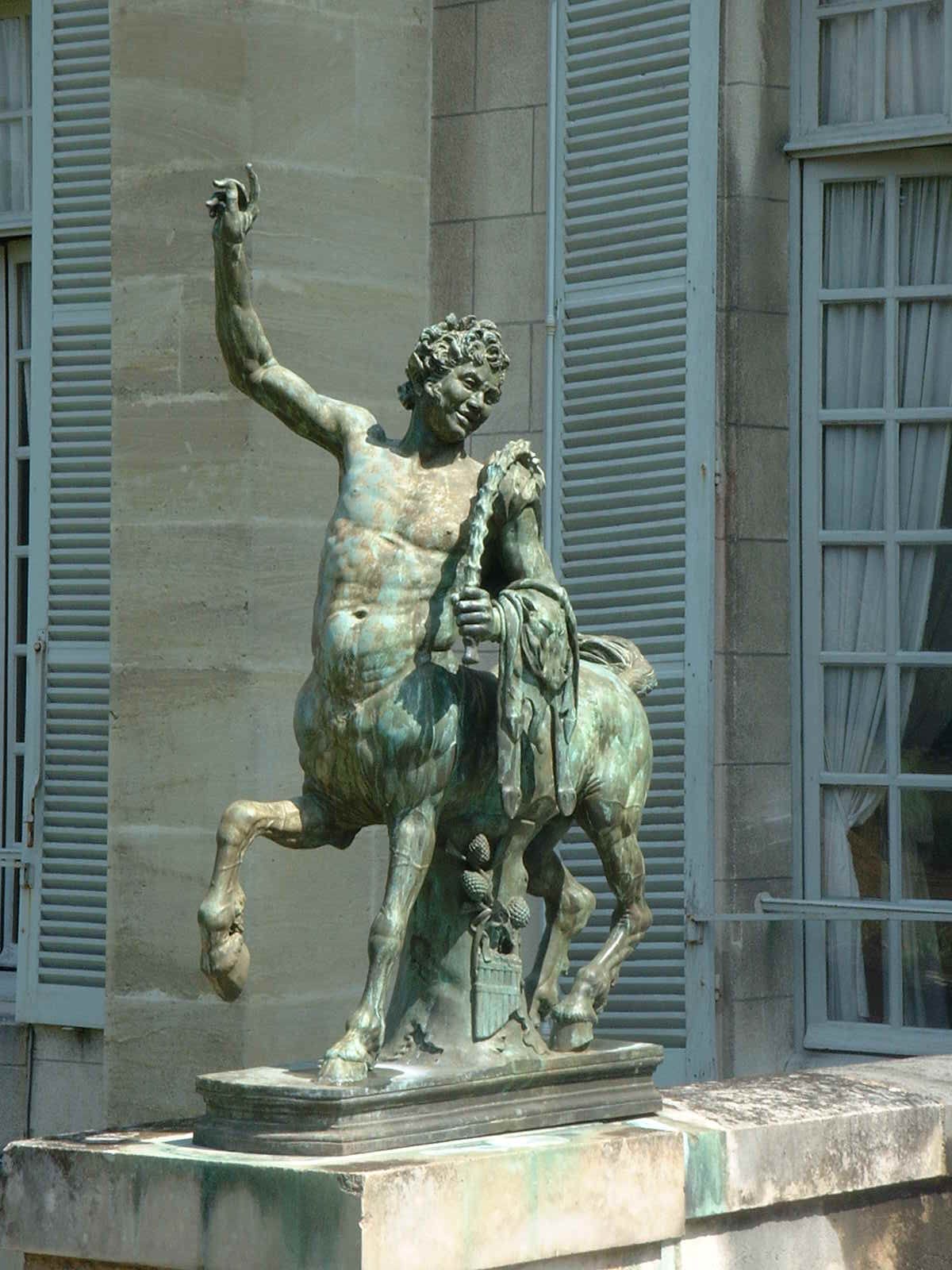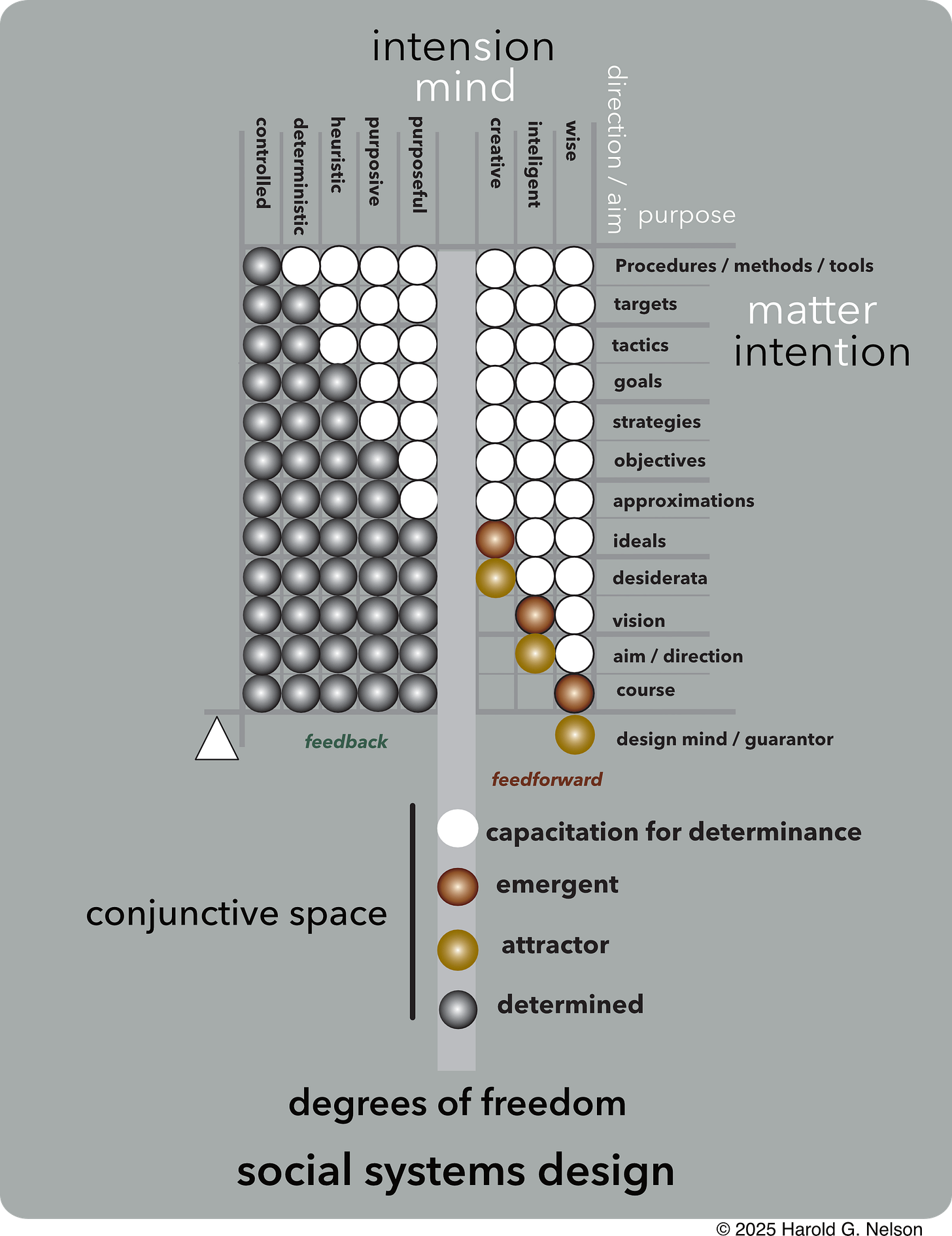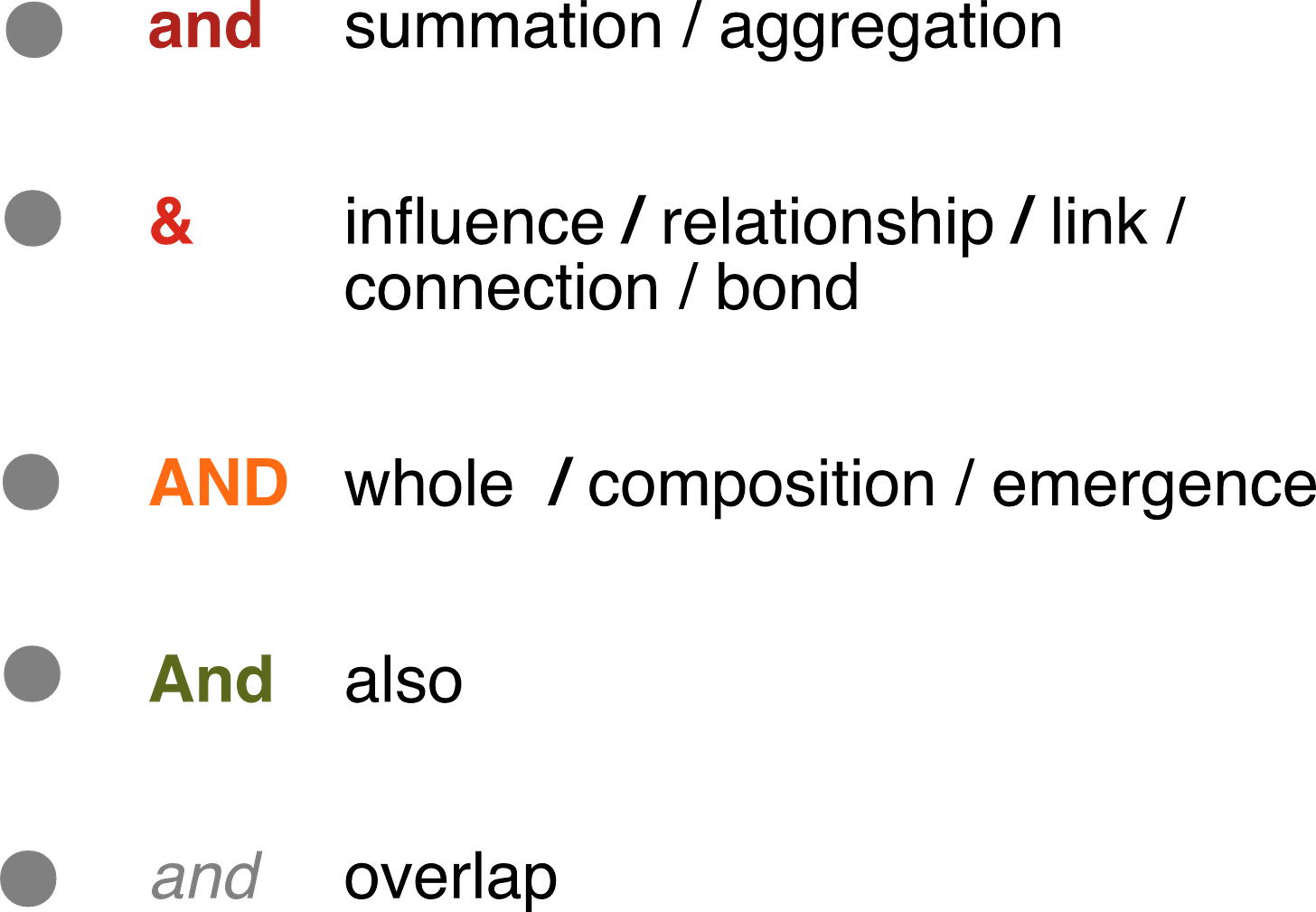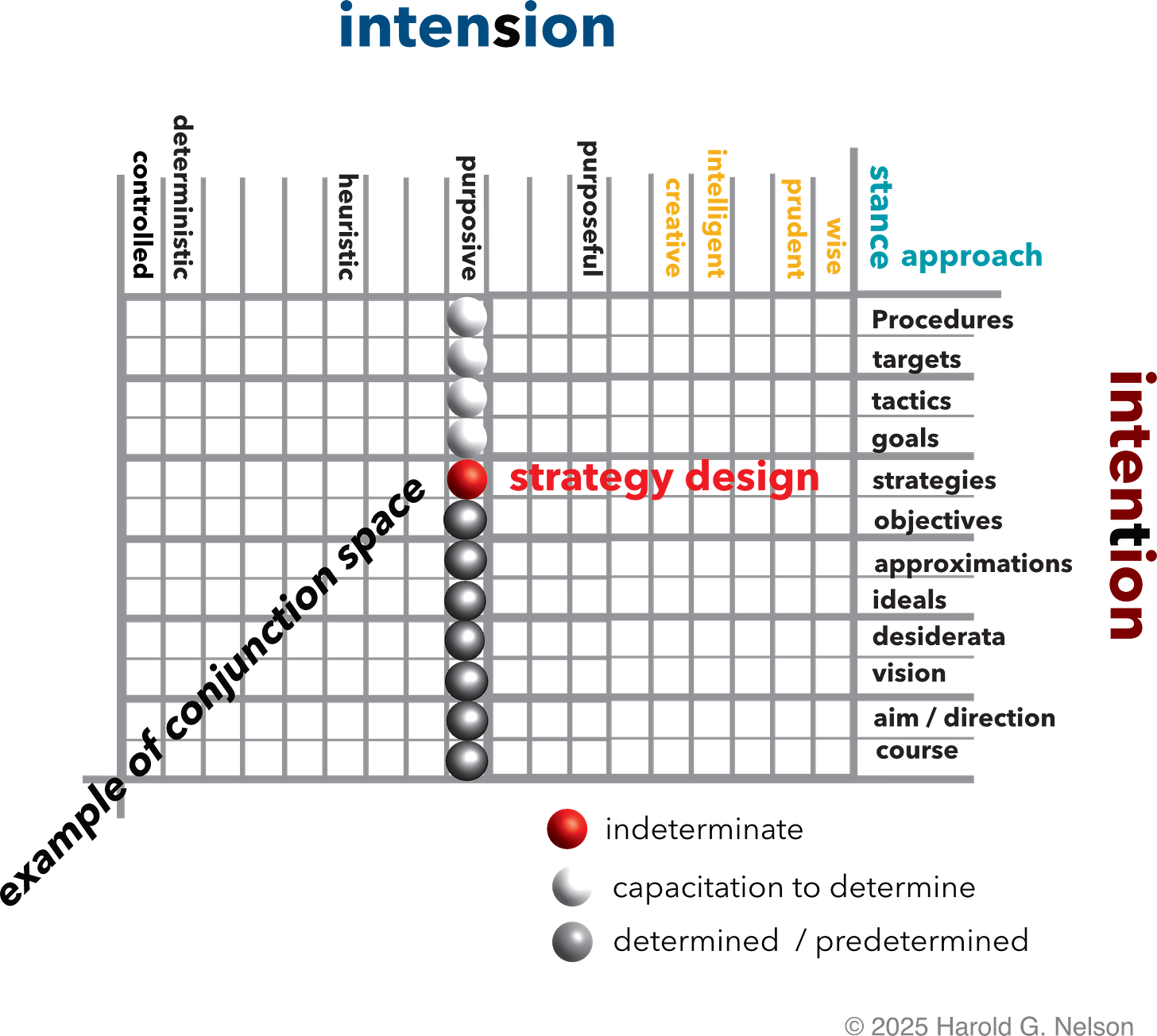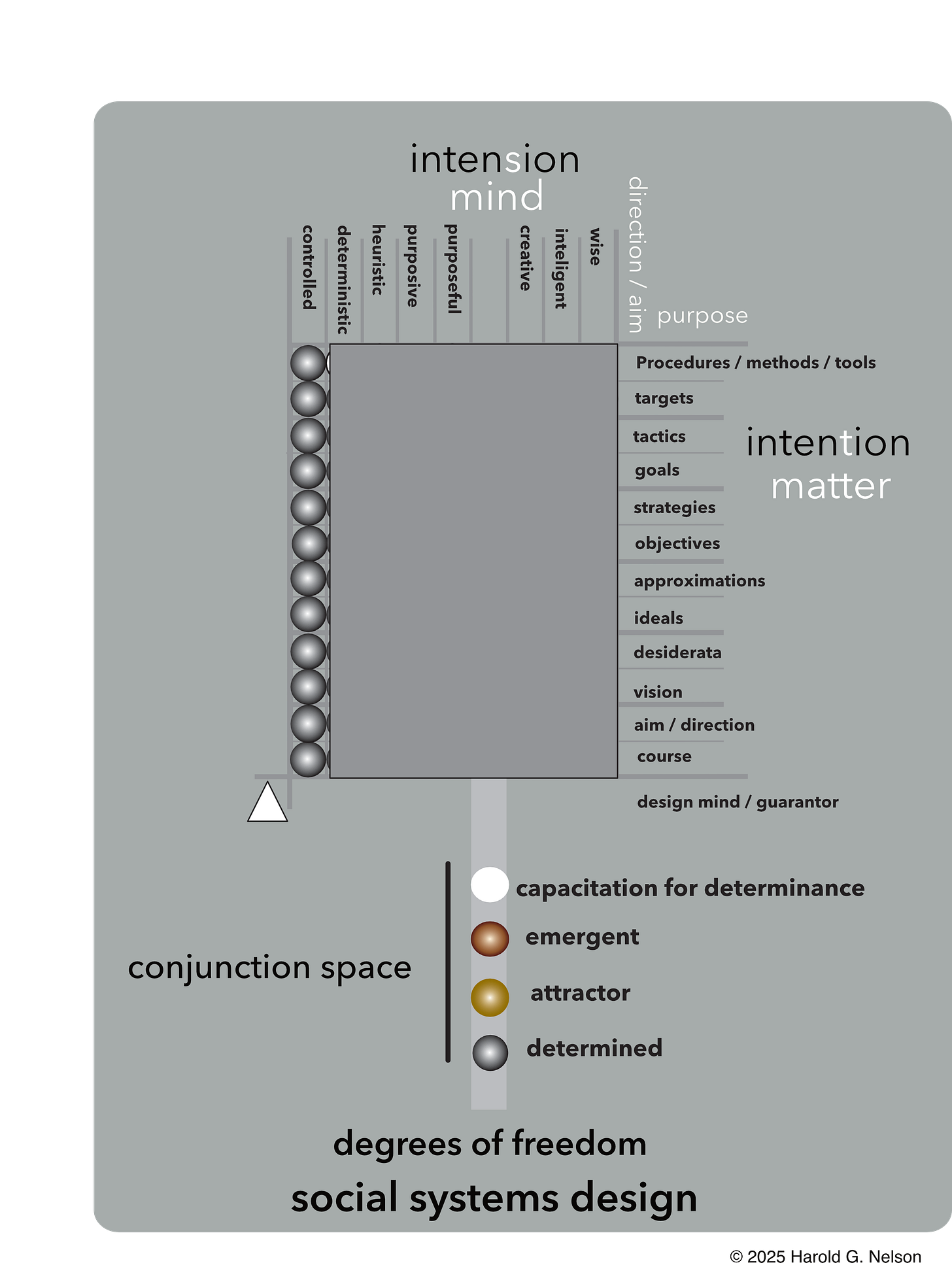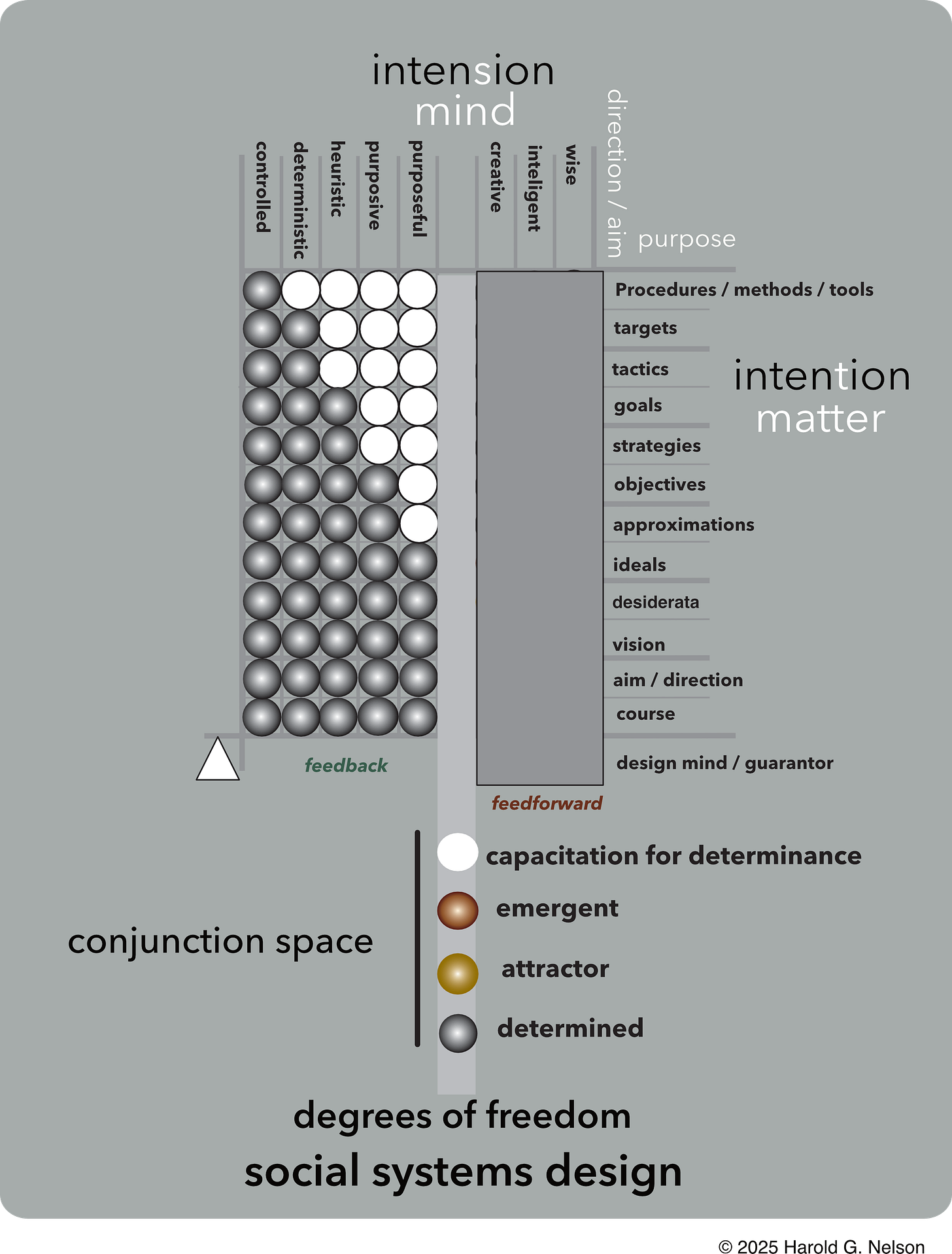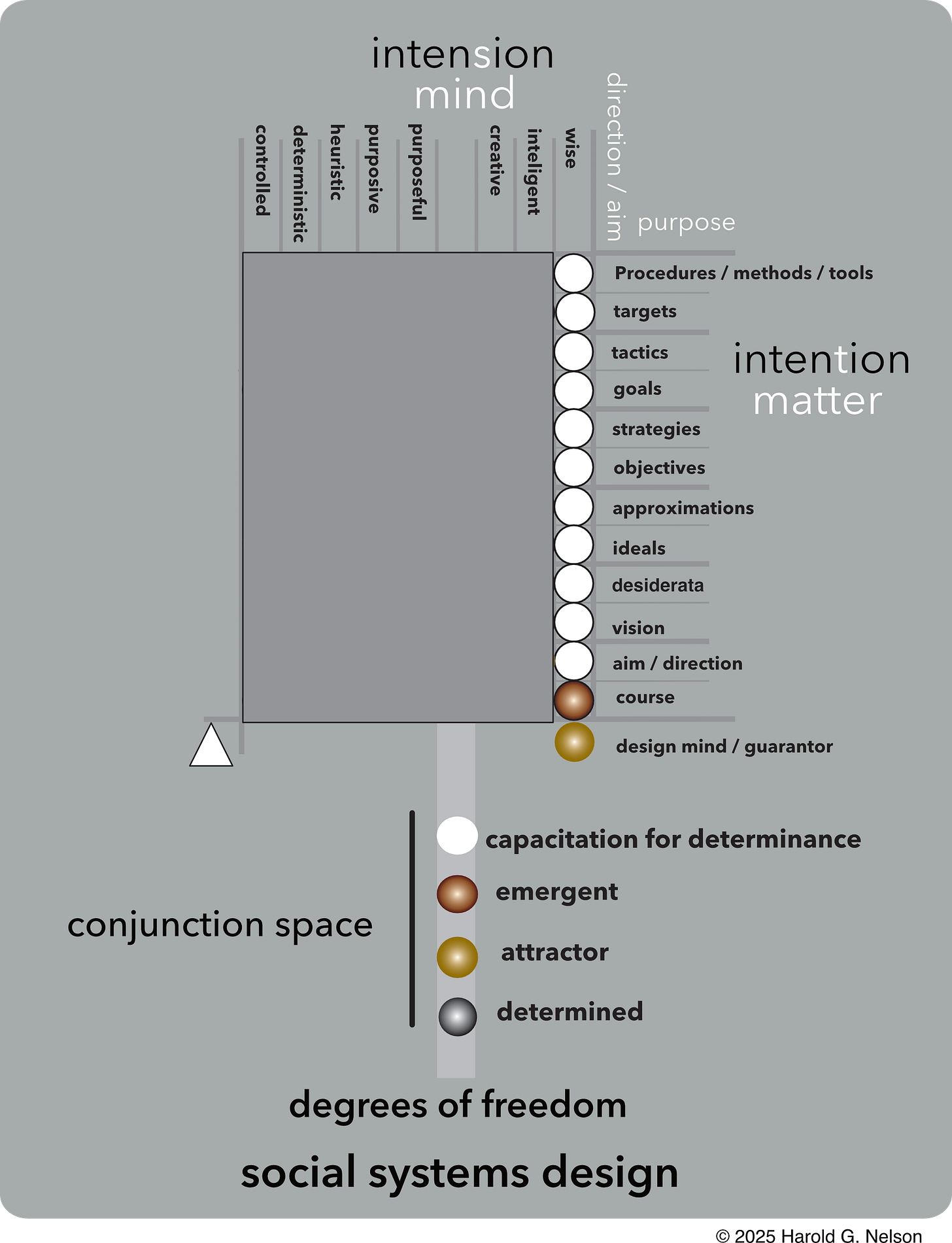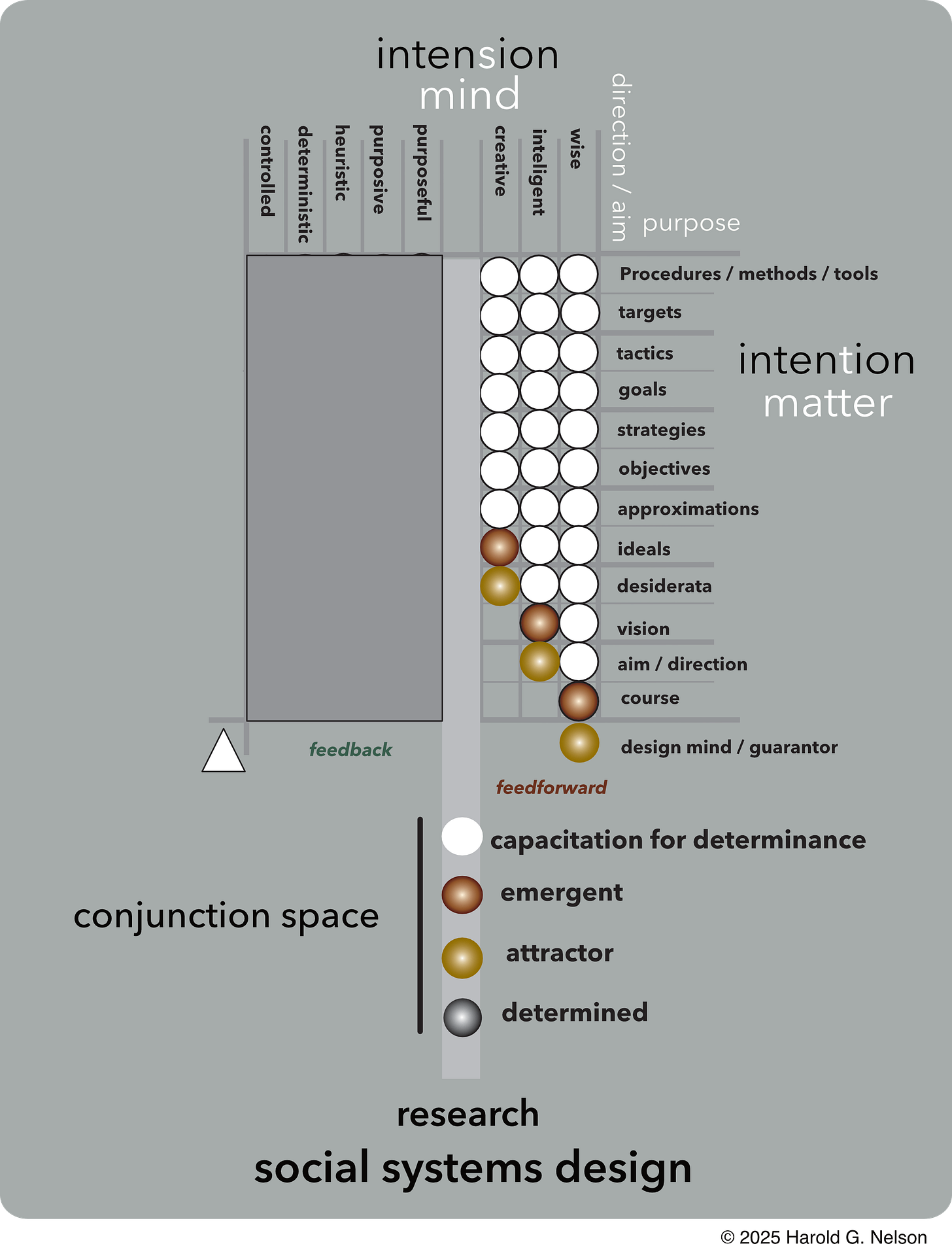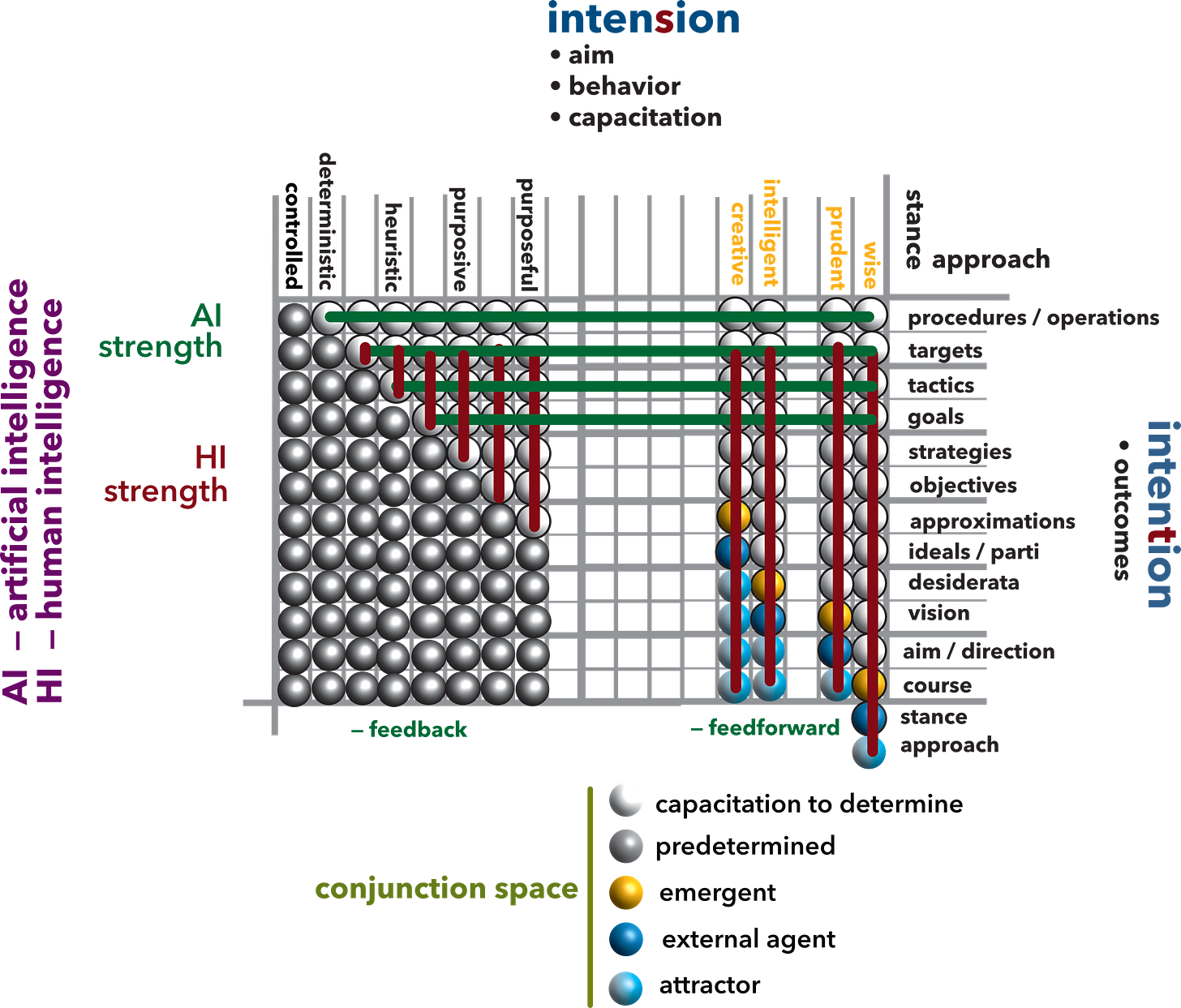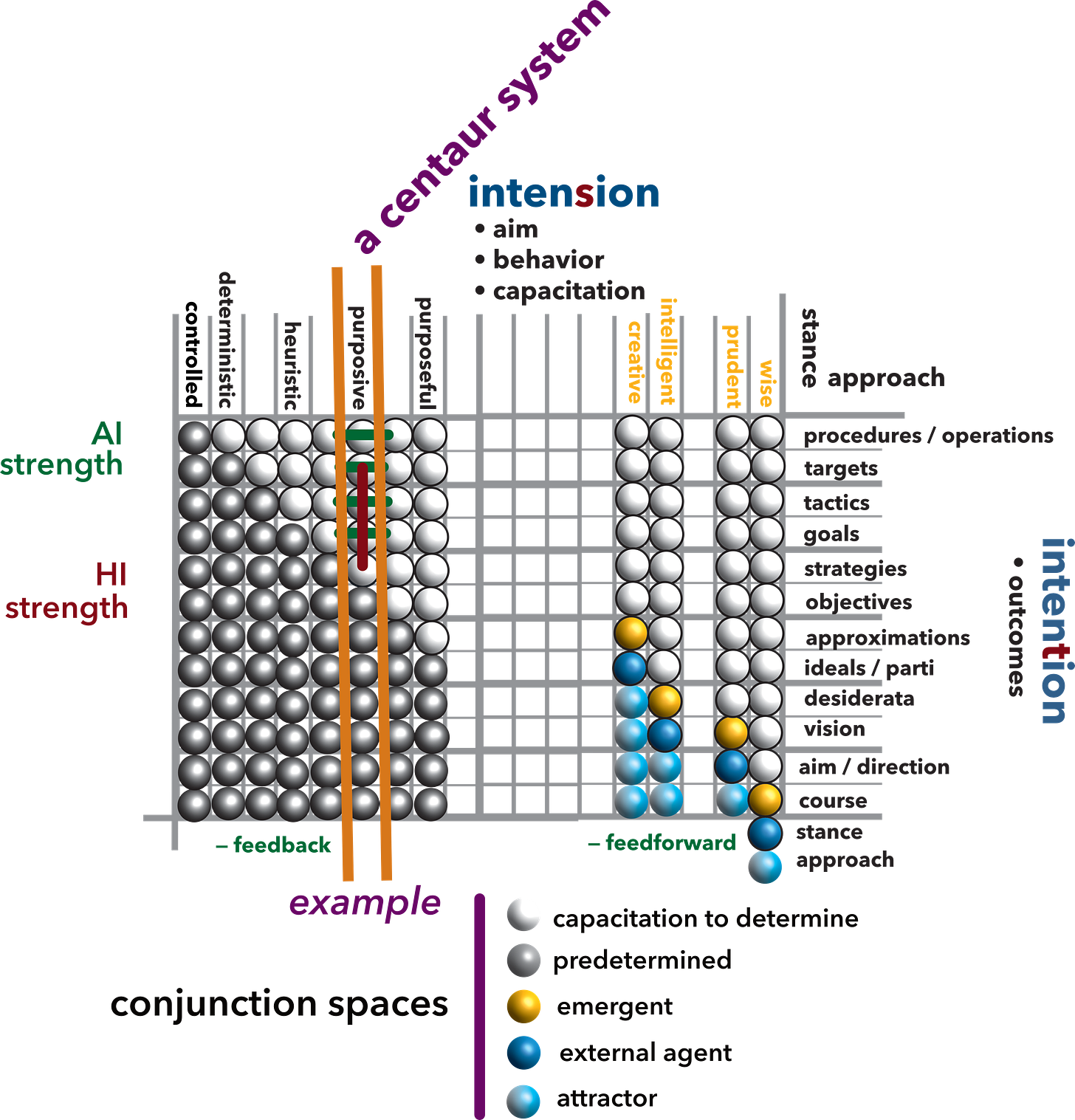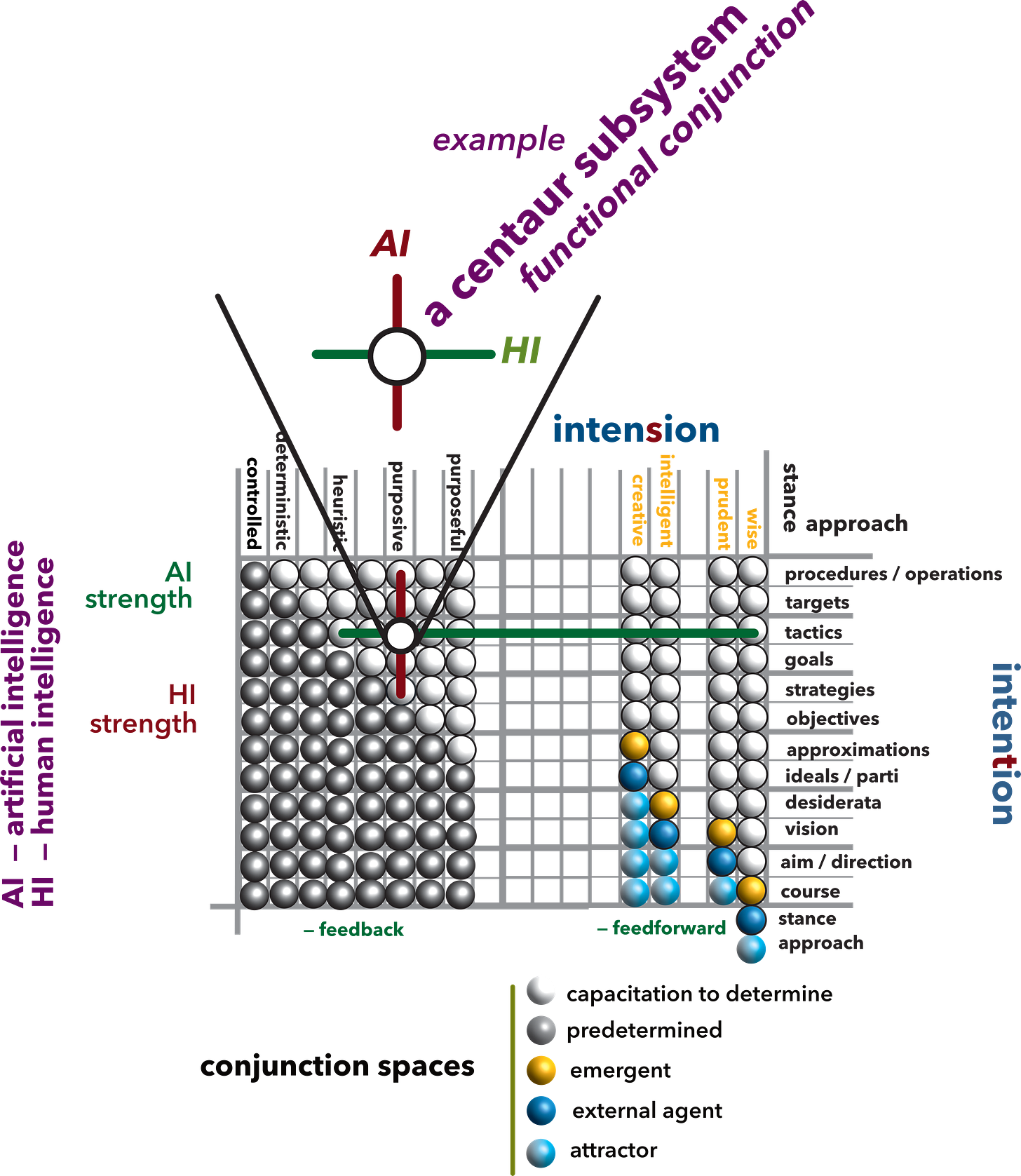systemic centaurs - part II
conjunctions of strengths
AI and degrees of freedom of inquiry and action
Designing and operating a ‘systemic centaur’ AI augmented teleological social system (see systemic centaur pt I. https://hnelson.substack.com/p/systemic-centaurs-part-i ) is not a plug-and-play process — despite what AI vendors and supporters say. It can involve a teleologic system with no degrees of freedom to one with a maximum number of degrees of freedom. Designing or operating a system in the role of a systemic agent requires courage, focus, competence, and capabilities. Not everyone can engage in systemic design and operation unless they have invested time and energy to acquire the necessary competencies and abilities.
Infusing or integrating AI technology into the functioning of teleological systems, replacing or augmenting human strengths, depends on the activities supported by concomitant degrees of freedom in each conjunction space.
teleological social system types
Teleological social systems are proactive in contrast to behavioral systems, which are reactive. Proactive activities require tools and processes that may or may not be enhanced by AI technologies. The challenge is to be able to understand the activities enough to make the right choices.
The schema below is one of many ways to distinguish types of teleological social or organizational systems. There are many well-known schemas for distinguishing types of organizations. For example, Henry Mintzberg defines five organizational types for business (https://www.business.com/articles/management-theory-of-henry-mintzberg-basics/ ).
teleological social systems
conjunction spaces
Conjunction spaces are where influences, effects, and reality come together and interact with one another directly or through agents. There are different ways in which things can interact. Although I don’t use the distinctions between types of conjunctions shown below formally, I do use the distinctions informally to assist me in understanding what I see when assessing a conjunction space and for determining what I am encountering as a design or operational agent. Any type of conjunction can occur in the same space at the same time.
conjunctions
teleological organizational system types
The schema shown above distinguishes between teleologic social systems (of which organizations are part) by the aggregation of conjunctive spaces that define the system type as a whole. The full array of teleologic types is distinguished from one another by their interrelated range of conjunction spaces ( the vertical columns in the schema). The types of systems are collected into two major categories based on the kind of dominant influence system in place — feedback or feedforward.
The conjunction space formed by the intersection of ‘intentions’ and ‘intensions’ creates complex environments to work and learn in, and to take action from. A challenge is to determine how or if technologies like artificial intelligence can be integrated into the inquiry and action that occurs in each conjunction space.
‘purposive system’ strategy design
As an example, we will examine a ‘purposive’ type of organization (see below). In particular, we will focus on the conjunction space where strategies are designed in response to the objectives that have been determined. Any strategies will be formed and evaluated in relation to the established objectives of the system. The strategies are indeterminate while the objectives are determinate in this instance.
The systemic agents operating in this space are required to have the abilities and competencies to design and facilitate strategy design. If they don’t, the system is not a teleological system but merely a functional assembly and not represented on this matrix.
strategy design in a ‘purposive’ system
‘rigidly controlled’ system type
To help simplify the nature of this schema of teleologic systems matrix, we can focus on the type of operational system — a ‘rigidly controlled’ system as shown below. The agents within this system have no degrees of freedom of inquiry or action. Their actions are predetermined and controlled for every instance of the system’s activity.
‘rigidly controlled’ system
An example of this kind of system would be a nuclear power plant where no degrees of freedom are allowed. If an agent chooses freely to make an inquiry or take action, there can be serious consequences. For example, the nuclear power plant in Ukraine — Chernobyl in 1986 — suffered a catastrophic meltdown when the system was not treated as a ‘rigidly controlled’ system. The design of this system was to be a ‘rigidly controlled’ system with no degrees of freedom. Each conjunction space was filled with predetermined decisions.
The graphic below presents the sector of systems that are designed around, and function through, ‘feedback’, or cybernetic, as distinguished from ‘feedforward’. The degrees of freedom in these types of systems are directly influenced by feedback from conjunction cells that are predetermined. In the schema below the conjunction spaces with any degree of freedom is colored ‘white’
‘feedback’ systems types
feedback systems
‘wise’ system type
The graphic below shows an example of ‘wise’ teleological systems where a maximum number of conjunction cells or spaces have full freedom of approaches to inquiry and action.
‘wise’ feedforward system
‘feedforward’ system types
The graphic below shows the category of systems that are influenced by ‘feedforward’. These systems have the highest number of conjunction spaces accommodating full degrees of freedom to make inquiry and take action in support of the system’s designed purpose.
feedforward systems
An example of the ‘creative’ type of organizational system would be the Apple Computer Company during Steve Jobs’s last tenure. The ‘wise’ type of system is pulled forward by the influences of ‘attractors’ which guide judgments, decisions, and choices towards a creative resolution of indeterminate situations.
centaur systems and AI
How do we begin to determine how to integrate or infuse technologies related to artificial intelligence into the matrix of interrelated conjunctive spaces that compose particular types of teleological systems (see below)?
We need to have a comprehensive understanding of all the activities that take place in each of the interrelated conjunction spaces. This is a major challenge, of course. We then determine if this is a space where the strengths of AI can dominate or where the strengths of human intelligence (HI) need to dominate. There needs to be a consideration of whether AI can replace HI in particular activities or if AI can only enable HI. And finally, there needs to be a distinction made of conjunction spaces where HI strengths would best serve.
The first stage in these assessments and considerations begins with a mapping of where the strengths of AI work best and where HI works best in conjunction with AI, and finally, where HI works best on its own, as shown below.
Intersecting strengths
‘purposive’ centaur system
shared conjunction space
transforming ‘indeterminate’ into ‘determinate’
There is no ideal organizational type that fits all organizations. Any organizational system needs to be designed to support its ultimate purpose. The same holds true for teleological social systems in general. Determining the degrees of freedom of inquiry and action that need to be available to the appropriate systemic agents needs to be matched with the best choices of tools and technologies for those concomitant freedoms. The successful integration of artificial intelligence into teleological social systems absolutely depends on this.



